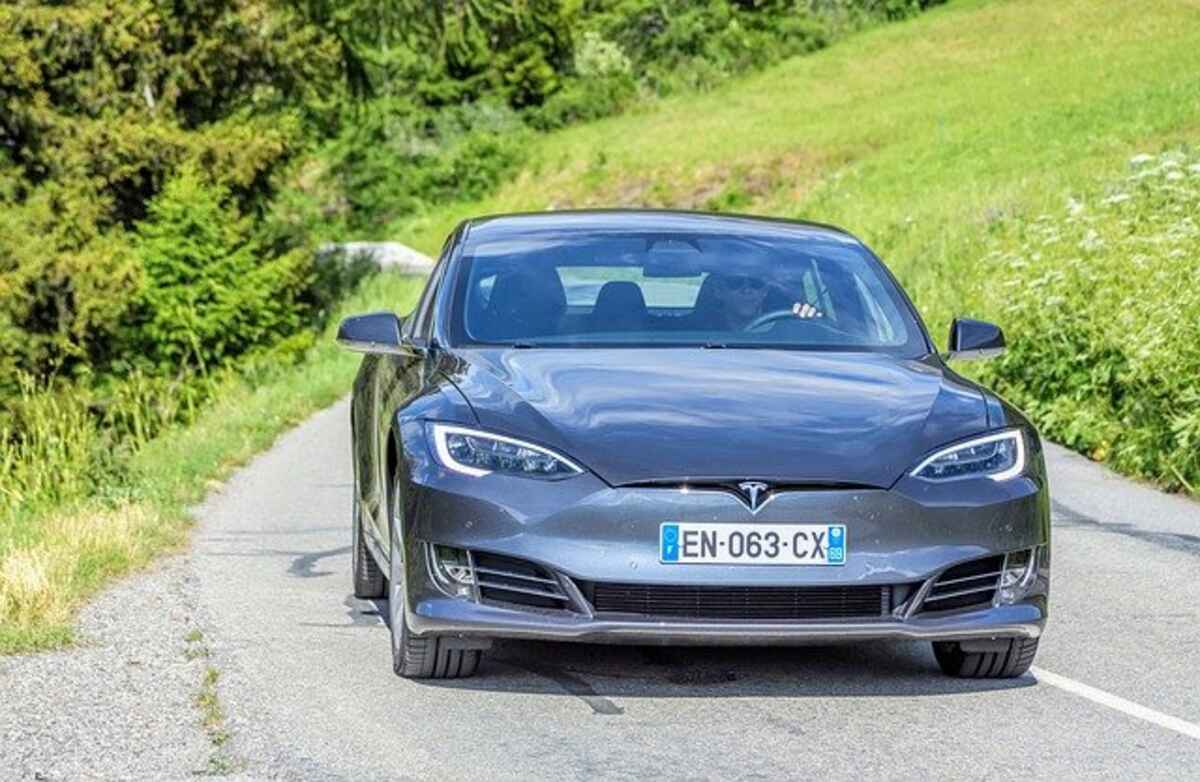The electric vehicle (EV) landscape is rapidly evolving, with Tesla at the forefront of this revolution.
As a pioneer in the industry, Tesla has not only redefined what we expect from electric cars but also how we keep them charged and ready to go.
Among the myriad innovations introduced by Tesla, the Destination Chargers hold a special place.
These charging stations, discreet yet ubiquitous in locations both common and surprising, represent a significant leap forward in EV infrastructure.
Introduction to Tesla Destination Chargers
Tesla Destination Chargers are designed to provide a convenient charging solution at destinations where drivers are likely to park for several hours at a time.
This could be hotels, restaurants, shopping centers, and even national parks. The idea is straightforward yet ingenious: integrate charging into the places people naturally go, ensuring that an EV’s battery can be replenished while its owner dines, shops, or sleeps.
The implementation of Tesla Destination Chargers globally has been a game-changer for EV owners. It has not only expanded the reach of electric vehicles but also significantly enhanced the ownership experience.
By strategically placing these chargers in high-traffic and high-visibility locations, Tesla has effectively addressed one of the most common concerns among potential EV buyers: range anxiety.
With more accessible charging options, the electric journey seems not just feasible but also desirable.
How Tesla Destination Chargers Work
Understanding the functionality of Tesla Destination Chargers illuminates why they are a pivotal part of the EV ecosystem.
These chargers are essentially Level 2 chargers, which means they offer a faster charging rate than the standard Level 1 charger that can be plugged into a regular household outlet. Specifically, Tesla Destination Chargers provide up to 22kW of power.
This translates to about 58 miles of range per hour of charging for a Tesla vehicle, although this can vary based on the model and battery condition.
The beauty of Tesla Destination Chargers lies in their simplicity. They are designed to be as user-friendly as possible.
Drivers simply pull up, plug in, and go about their business. There’s no need to fiddle with payment systems or apps; in many cases, charging is offered as a complimentary service by the host location, further incentivizing EV use among customers.
Moreover, Tesla Destination Chargers are integrated into Tesla’s navigation system. Tesla vehicles can automatically suggest nearby charging points, making it incredibly easy for drivers to find available charging stations.
This seamless integration is a hallmark of Tesla’s approach to user experience, ensuring that drivers have a hassle-free charging experience wherever they go.
Benefits of Tesla Destination Chargers
The advantages of Tesla Destination Chargers extend beyond the convenience of charging while parked. First and foremost, they play a crucial role in enhancing the appeal of EVs.
By increasing the number of available charging options, Tesla is making electric vehicles more practical for a broader range of activities and lifestyles. This, in turn, can help accelerate the transition to sustainable transportation.
Furthermore, Tesla Destination Chargers can be a boon for businesses. Locations that offer EV charging can attract Tesla drivers, who are likely to spend more time and money at a site while their vehicle charges. This can provide a competitive edge for businesses in attracting high-value customers.
Additionally, the environmental impact cannot be overstated. By facilitating easier access to EV charging, Tesla Destination Chargers contribute to reducing reliance on fossil fuels and lowering carbon emissions.
This aligns with global efforts to combat climate change and promotes a cleaner, greener future.
The Future of Electric Vehicle Charging
As we look ahead, the landscape of electric vehicle charging is set to evolve in exciting ways. Tesla, a company synonymous with innovation, is likely to continue leading this charge.
The expansion of the Tesla Destination Charging network, along with advancements in charging technology, promise to make EV ownership even more convenient and appealing.
One of the most anticipated developments is the advent of faster charging technologies.
As battery technologies improve, we can expect to see Tesla Destination Chargers that offer even quicker charging times, reducing the wait for drivers and increasing the turnover rate for charging spots.
Moreover, the integration of renewable energy sources with charging infrastructure is on the horizon.
Tesla is already exploring ways to power charging stations with solar energy, which would further decrease the carbon footprint of electric vehicles.
This synergy between EV charging and renewable energy is a critical component of the sustainable transportation ecosystem of the future.
Tesla Destination Charger Installation
For businesses and property owners interested in joining the Tesla Destination Charging network, the process is straightforward but requires careful planning.
Tesla provides support and guidance throughout the installation process, ensuring that chargers are set up efficiently and correctly.
The first step is to assess the site’s electrical capacity to accommodate the chargers. This may involve upgrading existing electrical infrastructure to ensure it can handle the additional load.
Tesla works closely with site owners to determine the optimal number of chargers and their placement to maximize convenience for drivers and visibility for the charging points.
Installation is carried out by certified professionals, ensuring that the charging stations are safe and reliable.
Once installed, the site becomes part of the Tesla Destination Charging network, visible to Tesla drivers through their vehicles’ navigation systems and the Tesla app.
This visibility can significantly increase foot traffic to the location, benefiting the business or property owner.
Finding Tesla Destination Chargers Near You
Locating a Tesla Destination Charger is remarkably simple, thanks to the integration of charging points into Tesla’s onboard navigation system and mobile app.
Drivers can easily find nearby charging locations, view real-time availability, and even receive directions.
This feature is invaluable for planning trips, ensuring that Tesla drivers can confidently travel to new destinations knowing that charging options are readily available.
The Tesla app also offers detailed information about each charging site, including the number of chargers available, the type of chargers (e.g., Level 2 or DC fast chargers), and any applicable fees.
This transparency allows drivers to make informed decisions about where and when to charge their vehicles.
Tips for Using Tesla Destination Chargers
For those new to the Tesla ecosystem, a few tips can help ensure a smooth charging experience. First, always check the charger’s availability through the Tesla app before arriving, especially during peak times.
While many locations offer multiple chargers, demand can be high, particularly in popular destinations.
Second, be mindful of charging etiquette. Once your vehicle is adequately charged, consider moving it to allow other drivers access to the charger.
This courtesy helps maximize the utility of each charging station and fosters a positive community among EV owners.
Finally, remember to plan your charging stops as part of your trip itinerary.
While Tesla’s navigation system can suggest charging points along your route, having a plan can reduce stress and ensure you make the most of your time while your vehicle charges.
Alternatives to Tesla Destination Chargers
While Tesla Destination Chargers are a significant part of the EV charging landscape, they are not the only option available to EV owners.
Other charging networks offer Level 2 and DC fast charging stations compatible with a wide range of electric vehicles, including Teslas (with an adapter).
Public charging networks, such as ChargePoint, EVgo, and Electrify America, provide thousands of charging stations across the country.
These networks often require a membership or app to access charging services, and fees vary by location and charging speed.
For Tesla owners, the Supercharger network offers the fastest charging speeds, ideal for long-distance travel.
Superchargers can charge a Tesla battery to 80% in about 30 minutes, making them a valuable resource for road trips.
Tesla Destination Charger Maintenance and Troubleshooting
Maintaining Tesla Destination Chargers is critical to ensure they remain operational and reliable.
Tesla provides ongoing support and maintenance for chargers in the Destination Charging network, working with site owners to address any issues that arise.
In the rare event that a charger is not functioning correctly, Tesla drivers can report the issue through the Tesla app.
This alerts Tesla’s maintenance team, who can then take the necessary steps to diagnose and fix the problem.
Site owners are also encouraged to perform regular visual inspections of the chargers to ensure they are in good condition.
Conclusion: Embracing the Future of Electric Vehicle Charging
The Tesla Destination Charging network represents a significant step forward in making electric vehicle ownership more practical and enjoyable.
By integrating charging into the fabric of everyday life, Tesla is helping to drive the adoption of EVs and support a more sustainable future.
As we look to the future, continued advancements in charging technology and infrastructure will further enhance the EV experience.
For Tesla drivers, Destination Chargers offer a glimpse of this future, where electric mobility is not just possible but preferred.
The journey toward a greener, cleaner world is a collective effort, and by embracing the innovations in electric vehicle charging, we can all be part of the solution.
Whether you’re a business owner considering installing a Tesla Destination Charger or an EV driver looking to explore new horizons, the future of electric vehicle charging is bright and full of promise.



